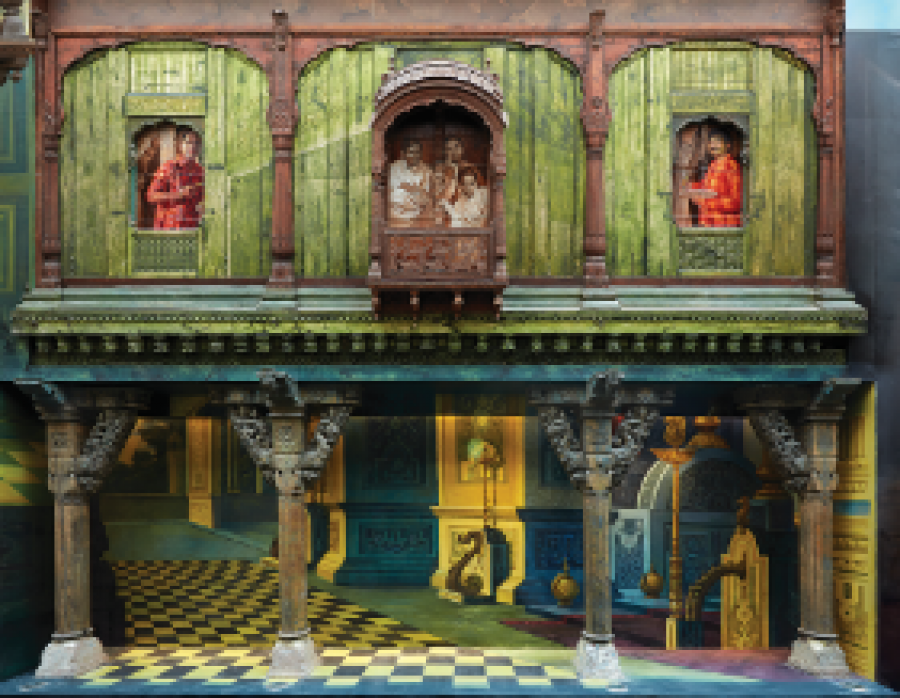WALKING TOWARDS GATE NO. 86 & 87
‘India Greets’ is designed as a tableau of India as one of the first installations which visitors encounter as a welcoming gesture to Jaya He Museum is a densely populated vista of diverse traditional doorways, facades, faces and fascias.
Sourced from across the country, they are a language of motifs, designs, and traditional crafts skills. They together offer a testament to cultural diversity of India as well as the often intangible commonalities that transcend ethnicity, religious affiliations, and geography. These are replete with symbols of welcome and protection – lotuses, sacred geometries, angels, ancestral figures, and celestial guardian figures.
THEATRICAL SCREENING
MORESHWAR PATIL & ANIL NAIK
In Theatrical Screening, the artists, Anil Naik and Moreshwar Patil, draw inspiration from the backdrop curtains used in theatres and photography studios in the 19th century. Adopted by theatre troupes in a number of Indian cities, especially in Maharashtra, West Bengal and Karnataka. The curtains were generally painted on cotton, and described the locale of scenes summoned by the narrative. It demarcated the background from the foreground and accommodated the actors within realistically rendered sceneries. The art of the painted curtains evolved into elaborate spectacles in the Parsi and Marathi theatre traditions during this time. Painted by both well-known and anonymous painters, these curtains transformed prosceniums into vividly coloured forests and riversides, village streets and bustling town squares, as well as gardens, royal courts and sumptuous palaces. “The theatre curtains used in drama and early films were painted by hand. In many instances, the artists were not formally trained but had learnt through a process of apprenticeship from the previous generation of theatre curtain painters,” says Anil Naik. Making the painted backdrop to appear creased, as though actually suspended from battens as in the proscenium theatre, proved troublesome. “After five months of explorations, we decided to paste the canvas flat on the wall and to distort the painted sceneries to simulate the folds of the curtains,” says Naik. The eight-foot high narrative painting of the fabled Raja Harishchandra, composed using images from the first silent film made in India, directed and produced by Dadasaheb Phalke in 1913, is interwoven with images of contemporary Hindi Cinema. The idea here, according to Anil Naik, who painted this section, “is to combine historical drama and contemporary cinema, to explore their relationship with one another artistically."



-1600929622-1_crop.jpg)
-1600929622-1_crop.jpg)